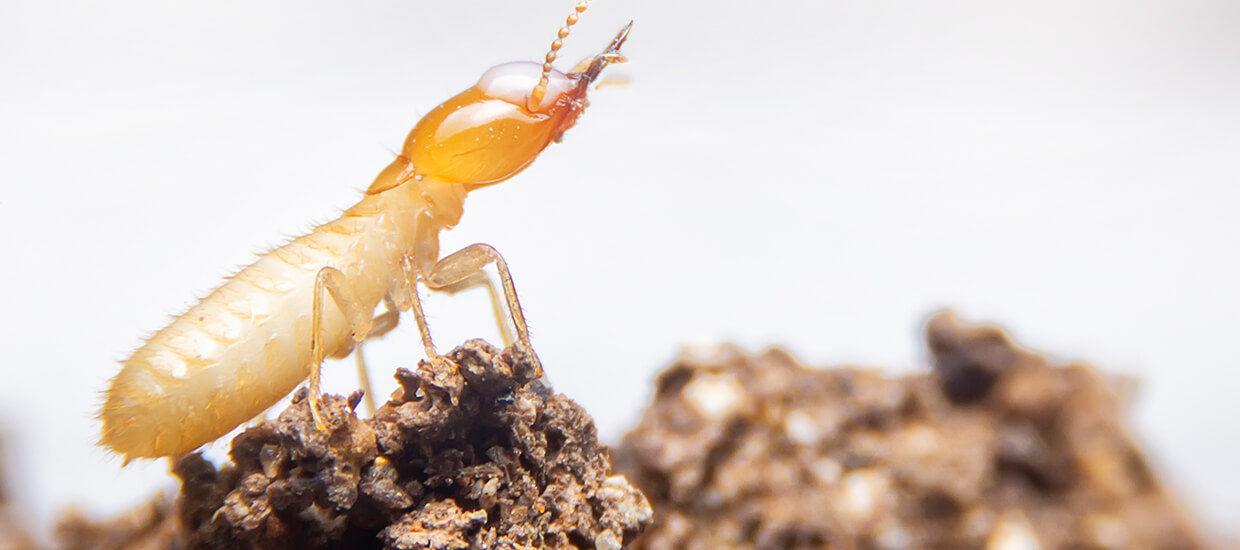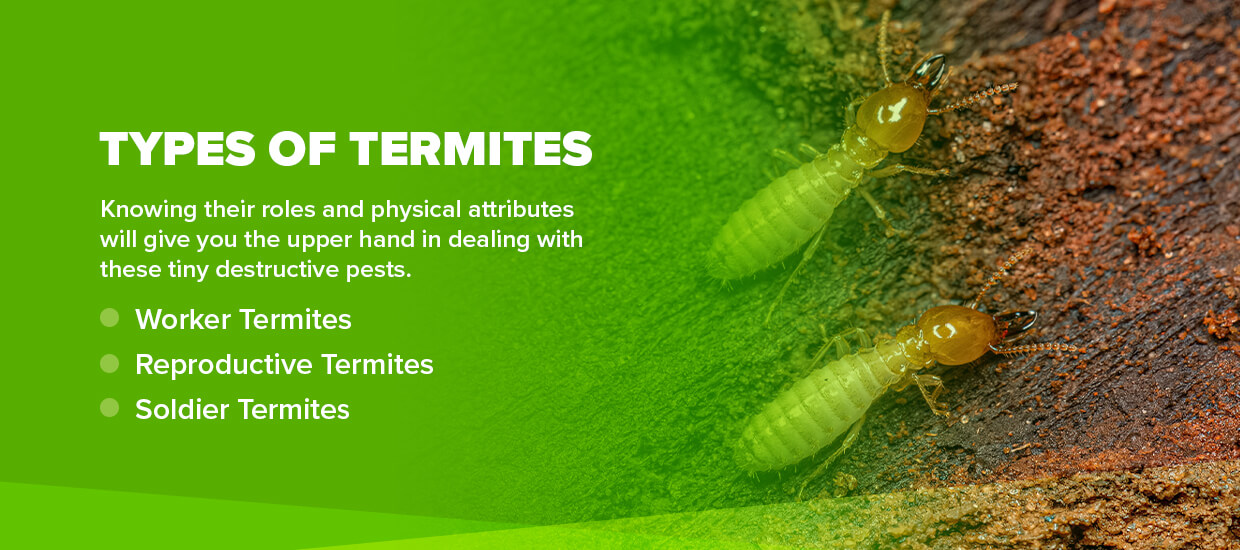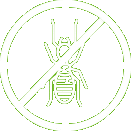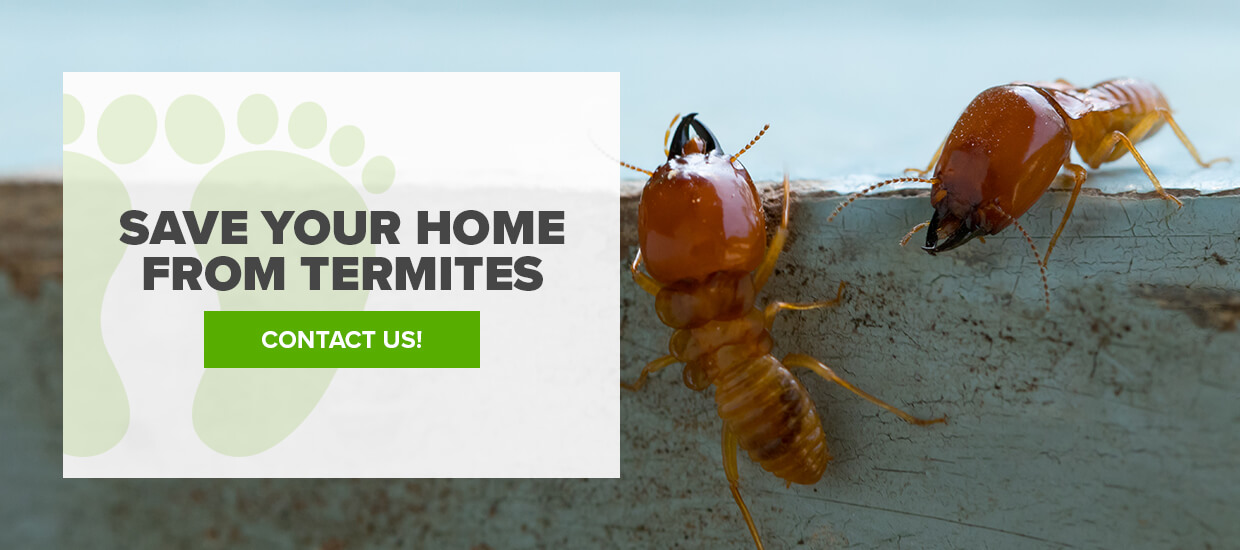What Do Termites Look Like?

Termites are small white insects found across most of the United States. They are similar to ants in that workers constantly forage for food for the colony and queen. They eat anything containing cellulose — wood is mainly made of cellulose, so that is their favorite meal. Termites are very destructive pests and can cause incredible damage to your property. Identifying the different types of termites and the signs of an infestation are vital skills every homeowner should have.
Basics of Termite Identification
Identifying termites means knowing their behavior and signs of an infestation. Termites live and feed on wood and always stay close to a food source, meaning they typically remain in one part of the house. They are especially attracted to moist or damp wood, so keeping the wooden parts of your house dry is a wise way to reduce the risk of an infestation.
Termites may be small, but they leave a lot of evidence if you know what to look for. Keep an eye out for these signs of termites:
- Mud tubes: Mud tubes are an obvious indicator of a termite infestation. Termites spread and travel through these tunnels of dirt that are held together by their glue-like saliva. Look for mud tubes that spread out like veins on the walls of your house and are about the width of a pencil.
- Swarmer termites: Swarmer termites are winged adult termites. They fly in groups and indicate that you have an infestation or are at risk of one. These termites can be black, beige, tan, red or dark brown with straight antennae, six legs and four transparent wings of equal size and shape. Swarmers shed their wings and crawl away, meaning a pile of discarded wings is another sign of termites.
- Droppings: Termite droppings look a lot like sawdust. They leave their droppings in or near wood, where they are hard to see.
- Hollow wood: Wood that sounds hollow when you tap it means you may have an infestation. Use a screwdriver or a knife to probe the wood. You likely have termites if you find a thin, gritty, gray-brown film on your tool.
- Household damage: If you notice signs of damage to your home, you must act quickly and call an exterminator. The late signs of an infestation include bubbling paint, sagging floors, crumbling or damaged wood trim, small holes in your drywall and loose tiles.
If you see any of these signs, you must book a professional inspection or exterminator because termites act quickly. Even the slightest delay could result in a lot of damage.

Types of Termites
Termites work in organized colonies with many different types of termites with different jobs. There are three types of termites you need to look out for. Knowing their roles and physical attributes will give you the upper hand in dealing with these tiny destructive pests.
Worker Termites
Termite workers make up the largest majority of a colony. They are white wingless insects ranging from around 0.2 inches to 0.4 inches. The workers have a variety of roles within the colony. If you see a termite, it is most likely a worker or a flying swarmer.
The roles of termite workers include:
- Look after the queen: The queen is fed and groomed by her workers and relies on them for the nutrients needed to lay eggs.
- Building tunnels: Worker termites are the ones who make the tunnels. They gather the materials and use their sticky saliva to create tunnels that look like veins on the walls of your house.
- Raising the young: Termite workers are responsible for caring for the queen’s eggs and looking after the hatchlings before they grow up and start foraging.
- Gather food: Termites chew through wood and other cellulose-heavy materials in search of food to feed themselves, the queen and the colony.
- Excavating: The job of digging the holes for the nest and its expansion is assigned to worker termites.
There are thousands of worker termites at any given moment, all focusing on at least one of these roles.
Eating through wood is their most destructive behavior, but they may target other sources of cellulose. Paper and grass are also targets for termites, and old, wooden bookshelves are a tasty food source for them. Their primary instinct is to look for food and will do so no matter what, which means they are dedicated to finding food and chewing it. In nature, they are useful ways of getting rid of dead and decaying matter, but that usefulness in nature is what makes them such a destructive pest for homeowners.
Reproductive Termites
Reproductive termites are easy to tell apart from the rest and, as the name suggests, are termites that breed and expand the colony. The queen is the most important reproductive termite, but king termites and winged alates are also reproducing members of the colony.
Alates are another name for swarmer termites. They have wings and are reproducers who leave the colony to start new nests. It can take years for a colony to start giving birth to winged swarmers. You can typically see them in spring, summer and fall, and they always travel in groups. Once they land, they discard their wings and start digging to start their own nests.
The queen is the largest type of termite, and her job is lay thousands of eggs every day. She is several times larger than her workers. The termite king is approximately the same size as a worker but is darker in color. The king spends his entire life underground, keeping the colony strong and viable. He, too, is fed by the workers.
Soldier Termites
Termite soldiers are assigned the duty of protecting the colony. Soldier termites are much large than workers. They can vary significantly in appearance from the other members of the colony to the point where you may confuse them with another species of insect. Larger and darker heads with sizeable mandibles are their biggest and most notable differences. They will protect the queen and colony with their lives from predators and anything they deem a threat. They may even bite.
Save Your Home From Termites
The most important thing any homeowner can do against termites is act quickly. Now that you know what a termite looks like and how to spot the signs of an infestation, you will know when to call a professional for help.
Barefoot Mosquito & Pest Control are masters at removing termites from your property effectively, efficiently, and responsibly. Homeowners can get rid of these pests by requesting a free online quote now.
Related Posts

Get Rid of Pests Today!
Our naturally superior pest solutions will protect your home and yard from dangerous and annoying pests. Get started today by calling us or requesting a free quote online!

